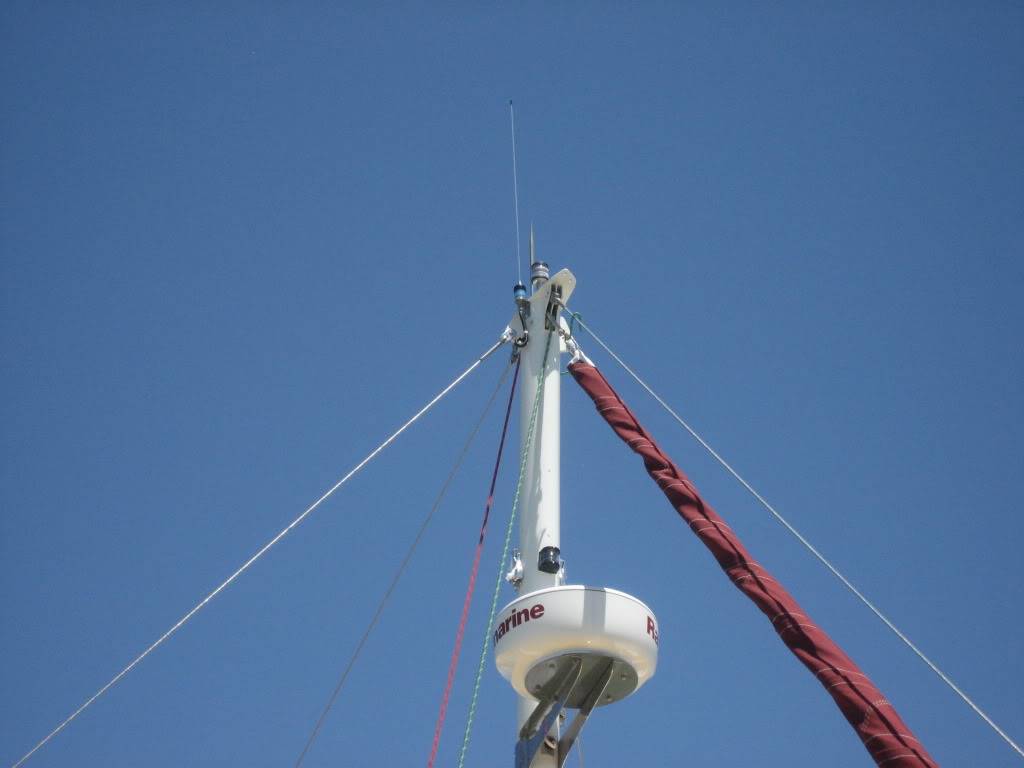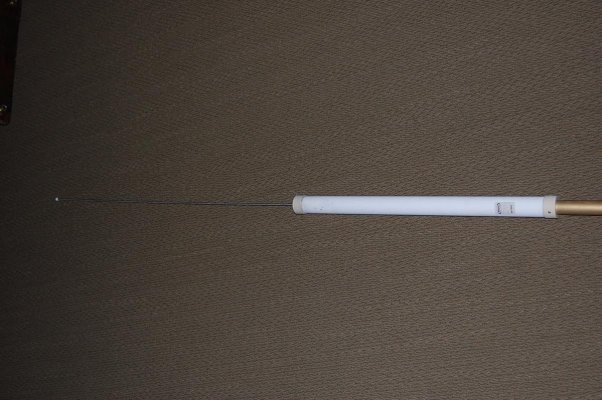You are using an out of date browser. It may not display this or other websites correctly.
You should upgrade or use an alternative browser.
You should upgrade or use an alternative browser.
VHF Antenna
- Thread starter MT Nest
- Start date
The friendliest place on the web for anyone who enjoys boating.
If you have answers, please help by responding to the unanswered posts.
If you have answers, please help by responding to the unanswered posts.
Edelweiss
Guru
__________________________________________What's the average life of a VHF antenna?
Hard to say, I don't think they have an average life. Mine is 35 years old and still working fine. But keep in mind, the white fiberglass pole is just the casing, the real antennae is the cable inside. As long as, it's not bent alot or exposed to sun light it could be many years.
There was an earlier post on here discussing revitilizing the fiberglass mast. I've never tried it myself but you may try searching for that.
Larry B.
Outside of corrosion attacking the metal components the thing that usually kills an antenna is the deterioration of the fiberglass casing. How fast this occurs probably depends on the climate your boat is in and if it's outside in the weather and UV all year or lives in a boathouse. The deterioration is most often indicated by the outside of the casing becoming "hairy" as the finish weathers off and the glass fibers begin to delaminate or whatever the correct term is.
The two most common cures for this are 1) replace the antenna or 2) sand off the "hairs" and paint it. The paint will not affect the reception or transmission of the radio.
When we installed a 24-foot VHF antenna for our lower helm radio some nine or ten years ago the local electronics dealer we buy all our electronics from told us that Shakespeare had recently improved the antenna casings on all its higher-end antennas and the new ones should last much longer. What starts out in the high-end of a product line usually trickles down into the lower end stuff so I would imagine that the outer finish and fiberglass casing on today's antennas hold up a lot better than they used to.
The two most common cures for this are 1) replace the antenna or 2) sand off the "hairs" and paint it. The paint will not affect the reception or transmission of the radio.
When we installed a 24-foot VHF antenna for our lower helm radio some nine or ten years ago the local electronics dealer we buy all our electronics from told us that Shakespeare had recently improved the antenna casings on all its higher-end antennas and the new ones should last much longer. What starts out in the high-end of a product line usually trickles down into the lower end stuff so I would imagine that the outer finish and fiberglass casing on today's antennas hold up a lot better than they used to.
Last edited:
psneeld
Guru
What's the average life of a VHF antenna?
Not to be a smart a**....but whenever it stops working the way you want it to.
The previous posters pointed out that if the innards are working OK...the fiberglass shell can be frayed, worn, broken (and repaired), nasty...etc..etc and that doesn't matter. I heard success with paint, varnish and enven shrink tube used to redo the fiberglass tube.
Whatever floats your boat...but performance is all that matters.
markpierce
Master and Commander
- Joined
- Sep 25, 2010
- Messages
- 12,557
- Location
- USA
- Vessel Name
- Carquinez Coot
- Vessel Make
- penultimate Seahorse Marine Coot hull #6
Outside of corrosion attacking the metal components the thing that usually kills an antenna is the deterioration of the fiberglass casing.
Glad I don't have to worry about a fiberglass casing.

Carey
Guru
- Joined
- Oct 5, 2007
- Messages
- 1,101
- Location
- USA
- Vessel Name
- Happy Destiny
- Vessel Make
- Custom Lobster Yacht
Morad Morad VHF-156 HD
Another option to get you away from fiberglass casings and into a lifetime antenna.
Morad VHF-156 HD
These antennas are awesome. I have had two on my boat for over ten years and they look like new. They are made of aluminum tubing with about a two foot stainless whip on the end. They mount to aluminum tubes in lengths from three to ten feet I believe. No plastic anywhere.
This one was mounted on a forty foot tower at home for many years to use as a Coast Guard emergency repeater. Keepin it just in case.
Another option to get you away from fiberglass casings and into a lifetime antenna.
Morad VHF-156 HD
These antennas are awesome. I have had two on my boat for over ten years and they look like new. They are made of aluminum tubing with about a two foot stainless whip on the end. They mount to aluminum tubes in lengths from three to ten feet I believe. No plastic anywhere.
This one was mounted on a forty foot tower at home for many years to use as a Coast Guard emergency repeater. Keepin it just in case.
Attachments
Last edited:
FF
Guru
- Joined
- Oct 12, 2007
- Messages
- 22,552
Mostly the life depends on how often it is used as a hand rail.
FF
FF
Similar threads
- Replies
- 3
- Views
- 504
- Replies
- 31
- Views
- 2K

